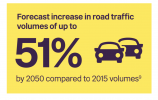‘Back to the bad old days’: swingeing rail cuts set alarm bells ringing
Rail operators surprised by immediacy and scale of cuts demanded by Department for Transport
Train operators have been told to find ways to cut hundreds of millions of pounds from the railway’s operating costs next year, in a move that is likely to result in fewer services and worse stations for passengers.
The Department for
Transport seeks to cut spending by 10% after the chancellor Rishi Sunak’s autumn budget.
With the Treasury anxious to limit spending on rail, which increased massively during the pandemic, letters from the DfT’s managing director of passenger services, Peter Wilkinson, have been sent to individual operators setting out the swingeing cuts needed across the industry.
While train operators expected cuts – the
Williams-Shapps plan for rail, which was published in May, set out a target of saving £1.5bn over the next five years – the immediacy and scale of the financial demands has come as a surprise. Government sources said there were no finalised decisions, and denied that individual operators were being asked to deliver cuts of 10% or more to expenditure.
Operators have been under direct government contract since the abolition of franchising at the start of the pandemic in March 2020. Under the emergency recovery contracts, they are paid a fixed fee to deliver services with the revenue and cost risk taken by the government.
Even if, as DfT sources suggest, the latest call for savings are a “routine business planning process” to maintain efficiency and reduce the cost to taxpayers, alarm bells are ringing through the industry. While the
effects of the pandemic on rail travel patterns and revenue are clear to all, a division has grown between those who believe it is essential to maintain services and lower fares to attract passengers and those who favour cutting costs and
maximising current income.
According to figures released by the Office of Rail and Road on Wednesday, the Treasury spent an additional £6.5bn on running the railway in 2020-21, to cover lost revenues as passenger numbers dropped 78% overall.
The shortfall will be substantially less this financial year, with weekly rail demand having risen steadily to about 70% of pre-Covid levels by November – although the discovery of the Omicron variant and the reintroduction of mandatory mask wearing is expected to depress numbers. Provisional DfT figures showed a 10% drop in train travel last Monday, although the impact of storms would have played a part.
In October, train operators
announced a voluntary severance programme to try to reduce staff costs. However, further budget constraints could mean mandatory job cuts, with many of the fixed costs in rail, such as rolling stock and track access charges, impossible to reduce quickly.
Operators fear the reputational damage, and financial hit, of managing decline and likely industrial action. Under the new contracts, at least 20% of the potential profit will be linked to performance measures including customer satisfaction. One insider said: “If you’re setting the budget at a point where customers and staff are going to be unhappy, it looks pretty hard to get those fees.”
Forced redundancies would spell certain strike action, with even the scale of voluntary departures – many thousands applying at Network Rail alone – yet to be agreed after
months of talks with the unions.

 There were some specific services that were a problem (one particular one was I believe the highest passengers in excess of capacity in the country) but you could easily avoid them. My record of a seat is very close to 100%, and of a seat of my choice (forward facing priority window) is still pretty high.
There were some specific services that were a problem (one particular one was I believe the highest passengers in excess of capacity in the country) but you could easily avoid them. My record of a seat is very close to 100%, and of a seat of my choice (forward facing priority window) is still pretty high.
